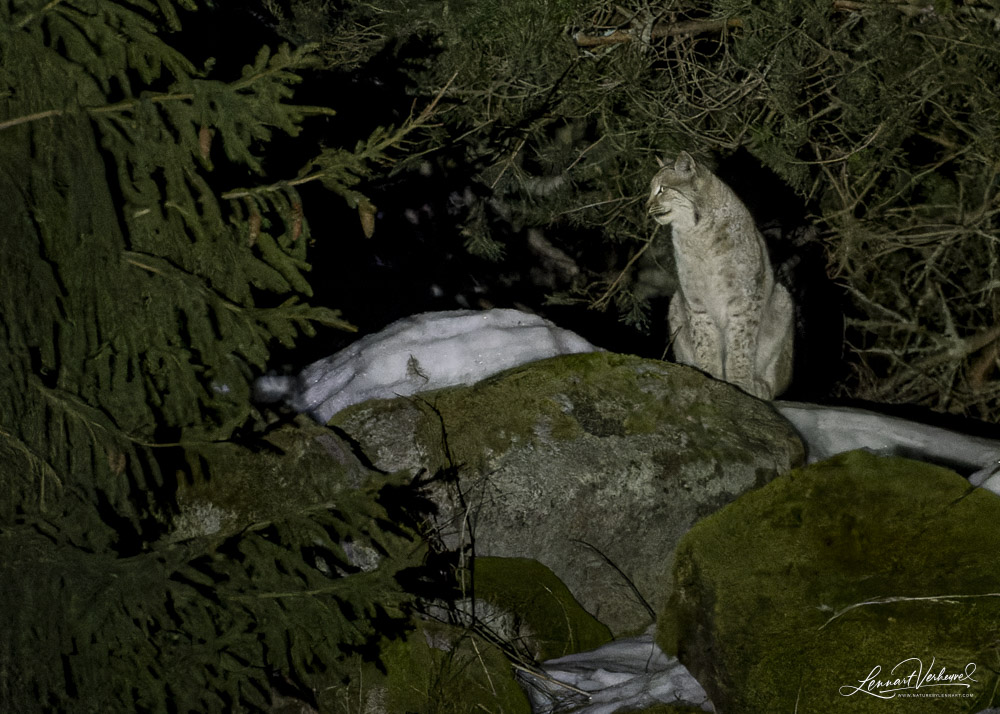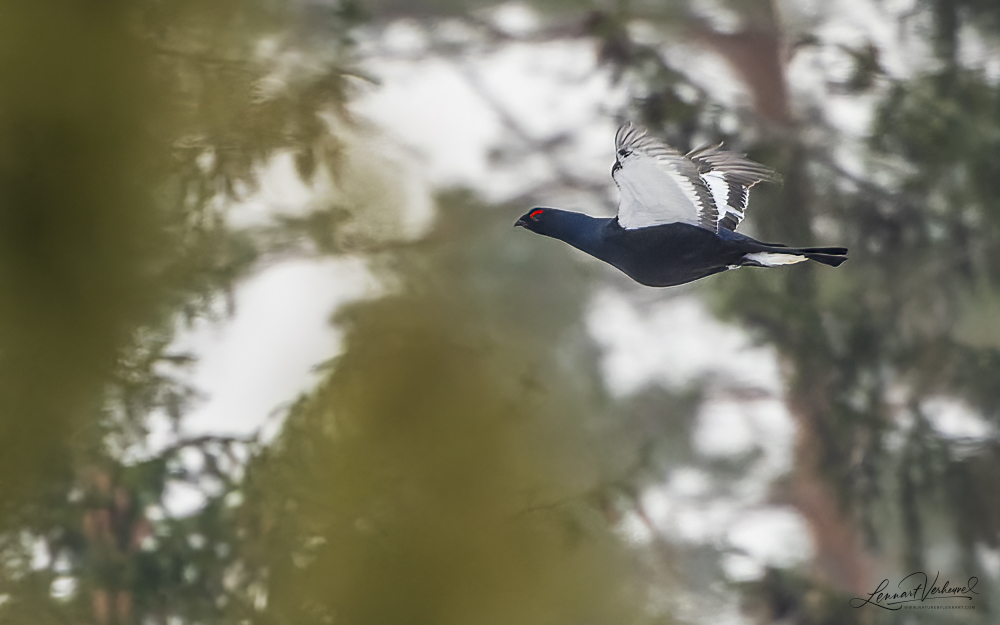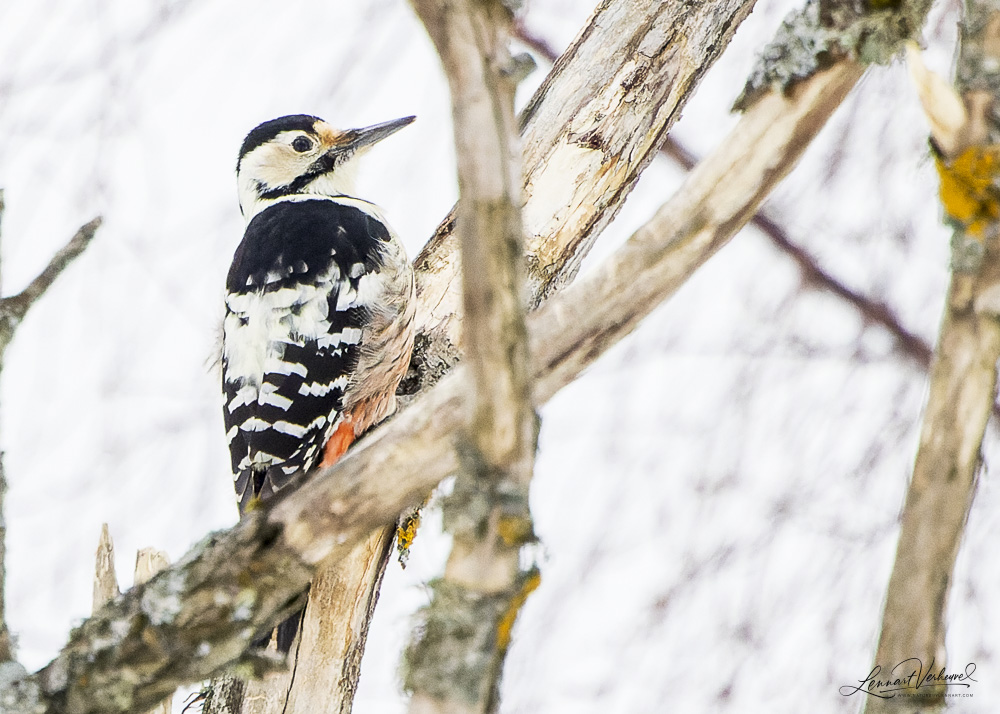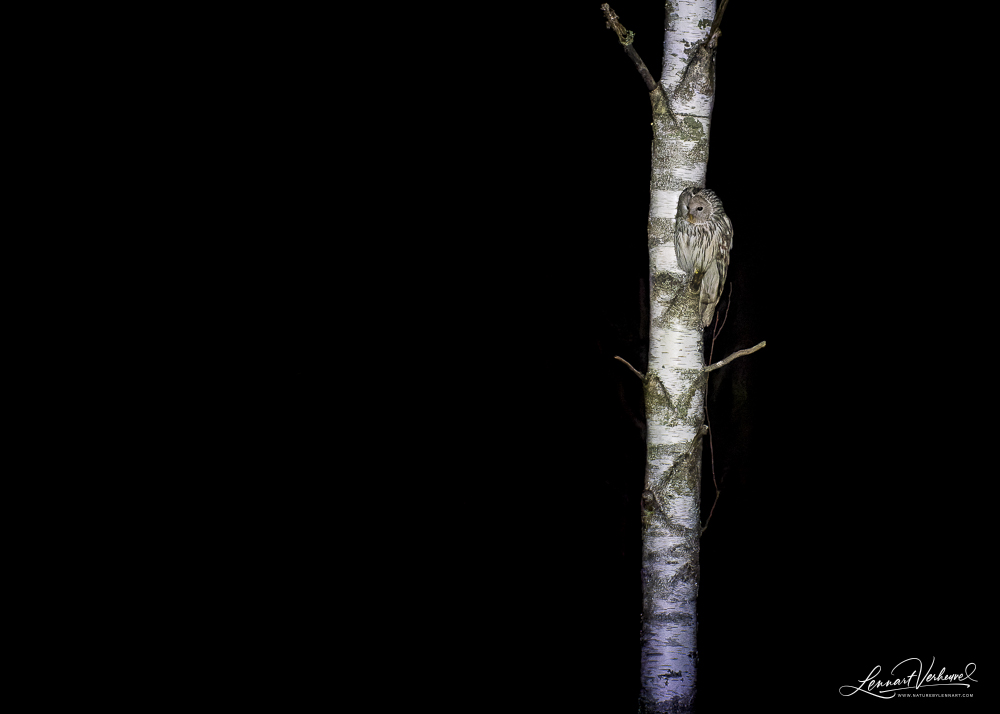- info@naturebylennart.com


The Eurasian lynx is much more widely distributed than its Iberian cousin, but much harder to see! The Iberian lynx was the very first cat I ever saw back in 2018, and since then, my list of cat sightings has steadily grown. In Europe, there were only two new cats for me to see: the European wildcat and the Eurasian lynx. I never rushed to look for the Eurasian lynx so far, thinking it will surely happen someday! This year, the opportunity finally arose to seriously make an effort to see it, and with success!
With Arie-Willem van der Wal and Jacob Molenaar, I had previously searched for the European wildcat in Limburg. The usual routine of these searches was a long evening (entire night) of searching, with just a glimpse of a wildcat at the end, if even that. When there isn’t much to see, there’s all the more to discuss, and that’s how the topic of the Eurasian lynx came up. Now that it seemed unlikely it would visit the Netherlands anytime soon, we had no choice but to focus on another country.
We would all be able to spend a week of searching, but no more. Now, we just needed to find a place where we had reasonable chances of spotting the Eurasian lynx within a week! The number of countries to try this is limited. Romania has good spots for lynx, and good observations are also made in Poland, but the very best place seems to be Estonia at the moment. I had noticed several good observations from this country, so we decided to try our luck there as well.
Shortly after we made the decision, flights and accommodations were booked. We would focus our search in and around Lahemaa National Park, as lynx were most frequently seen there. We had four nights to find the lynx. On the last full day, we planned to visit Saaremaa Island to see Steller’s Eider. Our chances were good, but with only four nights, we weren’t overly confident about seeing the lynx.
So we also looked into the possibility of going out with a local guide. It quickly became apparent that all of Estonia’s lynx success rides on the shoulders of one man: Martin Piispea. He has had a keen interest in local lynxes for years, so he knows their behavior and the places they frequent better than anyone else. He also has several camera traps set up that send him live photos of whatever passes by. This also helps to position yourself in the right place. So, it couldn’t hurt to send him a message to see if he was available. And he was! We could easily cover the extra costs between the three of us, so it soon was confirmed that could go out with Martin on our first, second, and fourth night.
Now we had quite a bit of confidence that we would succeed. And so, on Monday, February 19, we boarded the plane to Estonia. We arrived early in the afternoon, giving us time to drive to our accommodation in daylight. That was Sagadi Manor: a hotel in the middle of lynx territory with excellent service and a reasonable price. We arrived at the hotel just before dusk.
We had just enough time to store our luggage when Martin picked us up from the hotel. We chatted about lynxes for a moment, but soon we got into the car: our first night of lynx searching in Estonia had begun!
The roads through the Estonian countryside were covered in a combination of frozen snow and frozen rain at that time, resulting in icy roads. The road was completely covered with very slippery ice, just like it would be if the roads were frozen canals. It made driving challenging, but fortunately, apart from one exciting moment, we managed rather well. However, I still had to brake fairly cautiously when Martin shouted that he saw an Elk! Carefully, I reversed, and indeed, there was a herd of Elk in the last light! We were very happy to see this special species, and for me and Arie-Willem, it was still new, although Jacob had already seen some species in Finland.


Elk
Heartened by this, we continued driving. It was quite an active night with a lot of animal activity. We didn’t stop for many of the common species like foxes, raccoon dogs, and hares. However, Ural owls were always worth stopping for, especially since they also were new for two of us. We were lucky on that first night with some beautiful sightings.


Ural Owl
After a quick stop at a supermarket, we continued driving. According to Martin, the hours after dark until 9 p.m. were the most exciting for lynx, and the chances decreased after that. Fortunately, this statistic did not prevent Martin from finding a lynx just after nine o’clock! However, only he saw it, through his thermal camera. Full of hope, we drove an extra lap so we could give the lynx time to reappear. Again, Martin found the lynx! We were all ready when he turned on his lamp, and indeed, there was a lynx at the edge of the forest! However, the lynx immediately walked back into the forest, and we didn’t get a very good view. But it counted!
Again, we drove another lap to give the lynx a chance to catch its breath. When we returned, Martin told us to get our cameras ready. Once again, he turned on his lamp, and there was the lynx in full glory on a rock! This time it didn’t walk away, and we could watch the animal for several minutes. It was great to see this species so well for the first time!




Eurasian lynx
There was even enough time to get out of the car and take some photos with less eye reflection and fewer obstructing branches.




Eurasian lynx
Unfortunately, our sighting was interrupted by another car passing by: about the only one of the evening, but of course, it had to come at that moment! The lynx was now really gone, and we completed our lap. We still saw some beautiful Ural owls, and we also saw a beautiful Mountain hare, but it was too fast for good photos. Around midnight, we were back at our hotel, and we could look back on a very successful first evening in Estonia. The goal had already been achieved, and over the next few days, we could take it easy working on our bird list and maybe even have a second lynx sighting!
In the days that followed, we enjoyed the beautiful forest birds that are found here and that we don’t have or are very hard to see in our own country. The grouses definitely had our attention, and we could see Capercaillie, Black grouse, and Hazel grouse here. Capercaillie seemed to prefer a specific type of habitat, and we found both the male and female in exactly the same spot on different days.




Capercaillie
Black grouse proved to be the most challenging of the three, but one morning we had a beautiful sighting. I had last seen them in 2011 in the Netherlands on the Sallandse Heuvelrug when there were still wild Black grouse there.



Black grouse
Hazel grouse was by far the most common. We often saw them in the thermal scope at night.

Hazel grouse
During the day, however, it was of course a much nicer observation, and we were very happy with some birds that showed themselves well (for Hazel grouse that is). The Hazel grouse were the only grouses that were already displaying, and the high whistling tune they make then was special to hear.


Hazel grouse
Woodpeckers were the next group of birds that we paid a lot of attention to. In particular, White-backed woodpecker, Grey-headed woodpecker, and Three-toed woodpecker caught our interest, as these are species that are hardly or not found in the Netherlands. However, it was still too early for the Three-toed woodpecker in Lahemaa, so we didn’t see them. However, one morning we had a beautiful sighting of a White-backed woodpecker.




White-backed woodpecker
Grey-headed woodpecker also seemed not to be active yet in Lahemaa, but hopefully, we would get a second chance at the end of the week. In addition to these woodpeckers, we also saw the other woodpeckers that are more common in the Netherlands, such as Great spotted woodpecker, Middle spotted woodpecker, and Lesser spotted woodpecker.
The Eurasian treecreeper also showed itself well, and of course, this is the counterpart to our own Short-toed Treecreeper.

Eurasian treecreeper
Furthermore we saw the white-headed subspecies of Long-tailed Tit, which was pretty cool to watch.



Long-tailed tit
At night, the owls stole the show when it comes to birds. In addition to the Ural owl, we also saw Tawny owl, Long-eared owl, and Pygmy owl.


Ural owl


Long-eared Owl
The latter was a really cool unexpected sighting of a bird that we only picked up as a heat signal which disappeared into a hole. When we walked over to see what it was, the little head of a Pygmy owl suddenly peeked out of the hole! It was special to see how small this owl is.

Pygmy owl
The thermal scope even gave us a second lynx. It was hunting for Roe deer, and to not disturb the hunt, we kept the flashlights off. That meant no new photos, and we had to make do with the image through the thermal scope. Martin made a compilation of all the interesting thermal images from our trip, which can be viewed on Youtube. The hunting lynx is also visible in it.
Fortunately, we had already had a beautiful sighting on the first night! Besides the lynx, we certainly couldn’t complain about the supporting cast of interesting mammals. In addition to the moose we had already seen, we had multiple sightings of European Polecat and even a sighting of Pine Marten. Furthermore, we saw the Mountain hare beautifully.


Mountain hare
After our four days in Laheema, we could say goodbye to the area very satisfied. It was a short night’s sleep because we were in bed around half past midnight on Friday morning after the last night of spotlighting, but at half past three, we were already up again to spend the whole day on Saaremaa Island. The goal was Steller’s Eider, and who knows, we might see more!
If you are also interested in this part: click here!
Want to read back about how it went with the Iberian lynx? Click here!